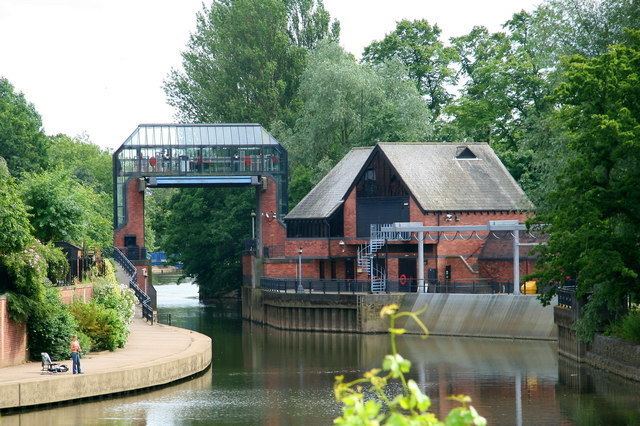 | ||
The River Foss Barrier is a floodgate that straddles the River Foss in York, England at the confluence of the Rivers Ouse and Foss just south of Clifford's Tower. The barrier was opened in 1988 after flooding from the Foss and two other becks caused more damage to properties in the city than when the Ouse was in spate. The purpose of the barrier is to prevent backing up of floodwater from the Foss when it meets the surgewater of the Ouse and cannot drain away. The pumps adjacent to the barrier move water from the Foss into the Ouse.
Contents
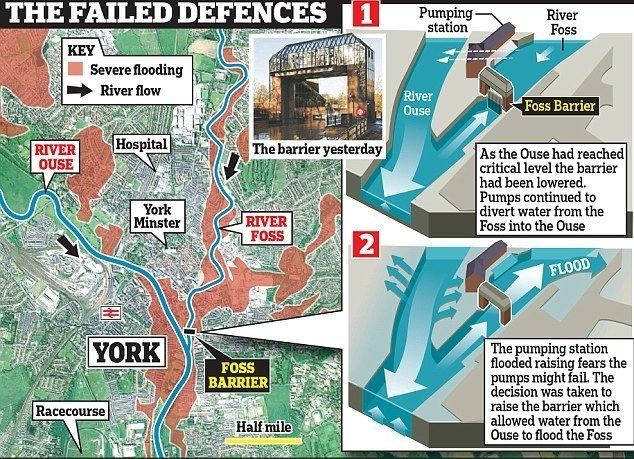
History
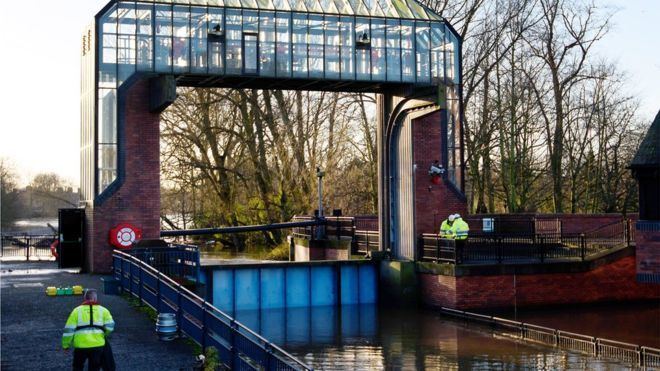
After many years after flash flooding, the York Water Authority commissioned the River Foss Barrier. Work on the barrier commenced in October 1986 and the barrier was opened in November 1988. The main aim of the defence is to prevent back wash from the River Ouse into the River Foss causing flooding upstream of the River Foss.
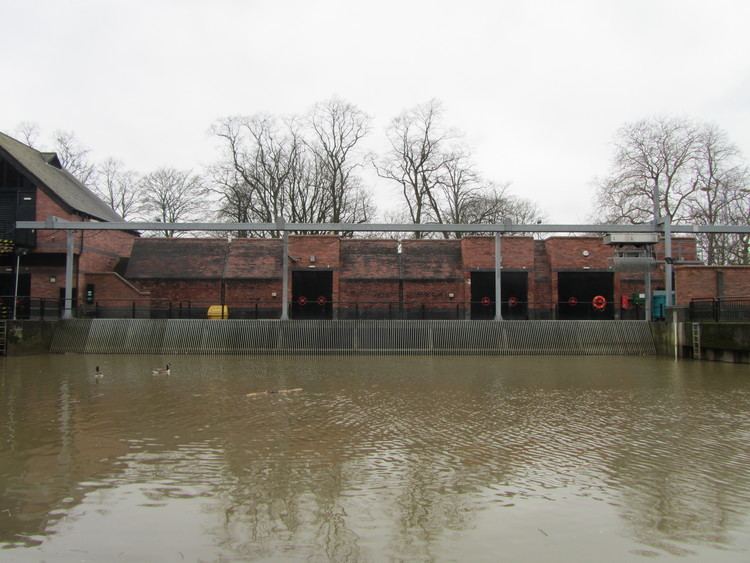
A probability analysis was carried out for flows in the River Foss combined with high levels in the River Ouse. This indicated a maximum flow of 30 tonnes (30 long tons; 33 short tons) of water per second. In March 2016, a budget was approved to increase capacity to 40 tonnes (39 long tons; 44 short tons) per second.
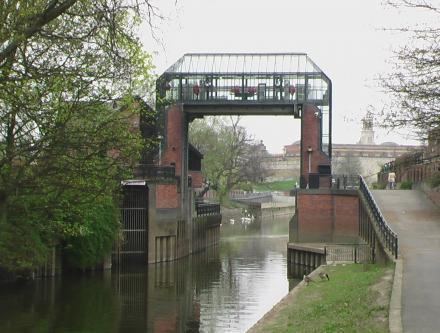
The barrier weighs 16.5 tonnes (16.2 long tons; 18.2 short tons) and is operated as a turnover lift gate. When in closed state, it is held horizontally above the river and boats and barges pass underneath whilst regular and efficient maintenance can be performed.
The normal water level at York is established as 5 metres (16 ft) Above Ordinance Datum (AOD) and the duty officer is alerted when the River Ouse reaches 7.4 metres (24 ft) AOD. After 7.8 metres (26 ft) AOD is reached, the barrier is lowered into the Foss. Boats are alerted by way of visible and audible alarms and after the alarm is sounded, the pumps are activated, the silt from bed is cleared and the barrier can drop into a tight fit.
The electrically driven barrier takes 4 minutes to lower into position. Eight pumps transfer 30 tonnes (30 long tons; 33 short tons) of water per second from River Foss into River Ouse through the side culvert. These pumps maintain the water level of the Foss at around 6.5 metres (21 ft) AOD. When the flood subsides and the level of the Ouse drops to 6.5 metres (21 ft), the levels of before and after barrier are equalised.
Warning alarms sound to alert everyone before the gate is opened and the pumps shut down.
Improvements
In March 2016, extra funds were allocated to upgrade the pumps to 40 tonnes of water per second (from 30 tonnes per second) and moving the electrics to safer point.
Media reports state Environment agency have taken recommendations onboard and have committed to addressing them.
Extra modern software to monitor river levels was also bought.
Reports have been published that reveal new pumps are to be installed by September 2016.
100 staff and contractors will work 20 months to complete the upgrade to the barrier. The new pumps weigh 6.5 tonnes each and cost £800,000. Approximately, 50 cubic metres, or 50 tonnes, of water per second can be pumped.
This improvement cost £17 million and is part of a wider improvement scheme.
The existing barrier will continue to operate until all improvements have been completed.
Flood defence scheme
The River Foss Barrier is part of a wider scheme that includes weirs, dams, temporary storage schemes, walls, barriers and temporary water wall that all contribute to reducing, diverting, holding back and preventing domestic overspill in the event of an extraordinary weather event.
